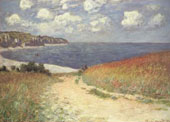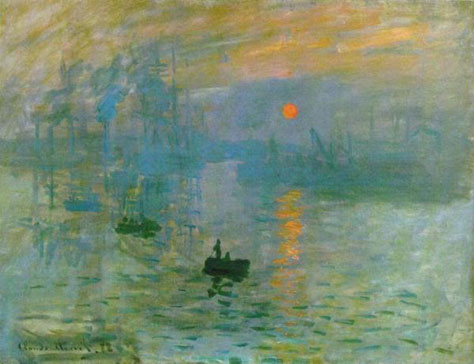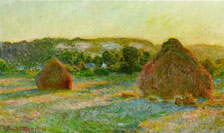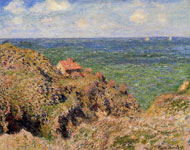|
Dr. Ellie L. Uzunova |
|
Institute of General and Inorganic Chemistry |
|
My web collection of impressionists paintings |
|
"Coin de jardin à Montgeron" Claude MONET 1876 |
|
Impression soleil levant, Claude Monet 1873, Huile sur toile 48 x 63 cm, Musée Marmottan, Paris France. Cette peinture du port du Havre a donné son nom au mouvement impressionniste. |
|
"Les Coquelicots à Argenteuil" |
|
"Le Parc Monceau" Claude MONET 1876 |
|
Sous les Peupliers, effet de soleil, Claude Monet 1887, huile sur toile 74.3 x 93 cm, Staatgalerie, Stuttgart, Allemagne. Représente une femme avec son ombrelle dans un champ bordé de peupliers. |

|
Claude Monet The invention of color (from the book “Monet” by Ivon Taillandier, Crown Publ. Inc. New York, 1982)
The wind has dropped. The little boats cruising near Monet’s floating studio come to a stop and the reflection of their sails is just perceptible in the rise and fall of the water. The man on the bank of the Seine erects the wooden contraption that he had just left in the grass. There is movement in the boat; Monet rises his right arm, and there follow in quick succession one—two—three—four—forty—one hundred strokes of the brush. Very quickly his white canvas is covered with light shades of color. Monet accomplishes in a few minutes what others would have done in several days or even weeks. |
|
GARDENS AND LANDSCAPES PAINTED BY MONET |
|
SEASCAPES PAINTED BY MONET |





|
The Fisherman's House, at Varengeville, Claude Monet 1882, oil on canvas 60 x 78 cm, Museum Boijmans van Beuningen, Rotterdam Netherlands. |
|
Cap Martin, near Menton, 1884, Oil on canvas 67.2 x 81.6 cm, Museum of fine arts, Boston |
|
Cap d'Antibes, Mistral, 1888 |
|
Chemin dans Les Blés à Pourville, 1882 |
|
The Fort of Antibes, 1888 |
|
Antibes, Afternoon Effect, 1888 |

|
Antibes Seen from the Plateau Notre-Dame, 1888 |
|
La Gorge à Varengeville, Private collection |
|
Claude Monet really loved to paint water and could be often seen in his “floating studio” - a boat, which he himself described as a barque. He travelled with his studio along the Seine and painted the meadows and the river. The garden paintings at Giverny, Argenteuil, and the Water-Lilly ponds come from the later years of Monet. Most of these paintings are spread at museums and in private collections around the world. Musée Marmottan in Paris presents a very beautiful thematically organized exhibition. |
|
Meule en neige – Effet de Matin |
|
"Une Allée du jardin de Monet, Giverny" Claude MONET 1902 |
|
Wheatstacks (End of Summer) 1890-91; Oil on canvas, 60 x 100 cm; The Art Institute of Chicago |
|
La Pie, Effet de Neige, 1869, Musée d’Orsay, Paris |












